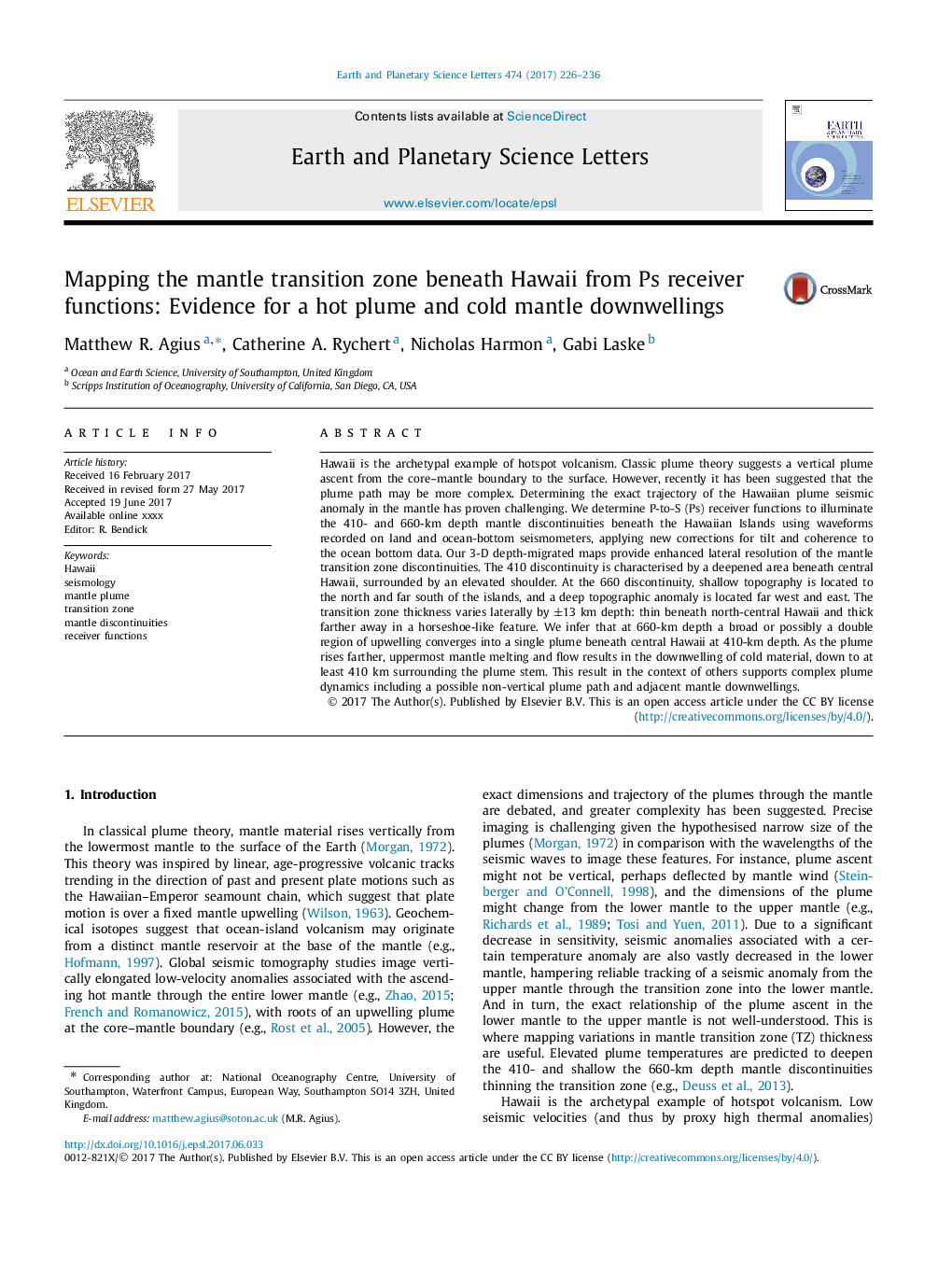| Article ID | Journal | Published Year | Pages | File Type |
|---|---|---|---|---|
| 5779736 | Earth and Planetary Science Letters | 2017 | 11 Pages |
Abstract
Hawaii is the archetypal example of hotspot volcanism. Classic plume theory suggests a vertical plume ascent from the core-mantle boundary to the surface. However, recently it has been suggested that the plume path may be more complex. Determining the exact trajectory of the Hawaiian plume seismic anomaly in the mantle has proven challenging. We determine P-to-S (Ps) receiver functions to illuminate the 410- and 660-km depth mantle discontinuities beneath the Hawaiian Islands using waveforms recorded on land and ocean-bottom seismometers, applying new corrections for tilt and coherence to the ocean bottom data. Our 3-D depth-migrated maps provide enhanced lateral resolution of the mantle transition zone discontinuities. The 410 discontinuity is characterised by a deepened area beneath central Hawaii, surrounded by an elevated shoulder. At the 660 discontinuity, shallow topography is located to the north and far south of the islands, and a deep topographic anomaly is located far west and east. The transition zone thickness varies laterally by ±13 km depth: thin beneath north-central Hawaii and thick farther away in a horseshoe-like feature. We infer that at 660-km depth a broad or possibly a double region of upwelling converges into a single plume beneath central Hawaii at 410-km depth. As the plume rises farther, uppermost mantle melting and flow results in the downwelling of cold material, down to at least 410 km surrounding the plume stem. This result in the context of others supports complex plume dynamics including a possible non-vertical plume path and adjacent mantle downwellings.
Related Topics
Physical Sciences and Engineering
Earth and Planetary Sciences
Earth and Planetary Sciences (General)
Authors
Matthew R. Agius, Catherine A. Rychert, Nicholas Harmon, Gabi Laske,
